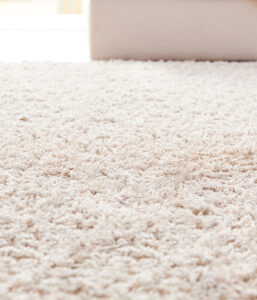Choosing between steam vs. shampoo carpet cleaning can shape how fresh, soft, and healthy your floors feel. Steam cleaning uses hot water and suction to remove dirt, allergens, and bacteria deep in the fibers. Shampooing applies cleaning foam that tackles surface stains but can leave residue behind.
Steam cleaning is often favored for homes with pets, kids, or allergy concerns, thanks to its ability to sanitize and dry quickly. Shampooing can still be useful for light maintenance, but residue can cause carpets to soil faster. Knowing these differences helps you clean smarter, not harder.
Vital Clean Carpet Cleaning offers eco-friendly steam cleaning for a deeper, longer-lasting clean without sticky soap. In this guide, you’ll learn how both methods work, their pros and cons, and which option best fits your carpet and lifestyle.
What Is Steam Carpet Cleaning?
Steam carpet cleaning uses a combo of hot water and pressure to get deep into the carpet fibers. It pulls out dirt, allergens, and bacteria, and you won’t get those harsh chemical leftovers.
With powerful machines and heat, steam cleaning breaks down grime that’s stuck way down. It’s a solid choice if you’ve got pets, kids, or allergies in the house.
How Steam Cleaning Works
Steam cleaning shoots very hot water mixed with eco-friendly cleaning solutions into your carpet. The heat loosens up the dirt and kills bacteria. A strong vacuum then pulls out the dirty water, leaving your carpet fresher.
Since the water’s nearly boiling, it sanitizes while it cleans. That helps keep mold and dust mites down. No sticky soap left behind—just a clean, soft carpet.
This process uses less water than old-school carpet washing, so your carpet dries quicker. It’s safe for most carpets and works well on stubborn stains and odors.
Equipment Used for Steam Cleaning
Steam cleaning machines have a water heater, a hose, a wand, and a powerful vacuum. The water gets heated up to around 200°F (93°C) or even hotter.
The wand sprays heated water mixed with non-toxic solutions. Then, the suction pulls up moisture and dirt, so your carpet’s almost dry when you’re done.
Some machines even have rotary brushes to lift dirt deeper, but they won’t wreck your carpet. Eco-friendly models are out there too, focusing on using less energy and water. All this makes steam cleaning really effective without being harsh.
Common Applications of Steam Cleaning
Steam cleaning works great for regular carpet maintenance and for deep cleaning after spills or heavy dirt. If you’ve got allergies, it’s a lifesaver, pulling out pet dander, pollen, and dust mites.
You can also use steam cleaning for upholstery and rugs to freshen them up without strong chemicals. Businesses love it too, since it dries fast and cleans deep.
What Is Carpet Shampooing?
Carpet shampooing is a go-to for cleaning dirt and stains out of your carpet. It uses foam or liquid soap to break down the grime, then pulls it out. The process, the shampoo you pick, and the tools you use all affect how clean your carpet gets.
Carpet Shampooing Process Explained
Shampooing starts with a good vacuum to remove loose dirt. Then, a cleaning solution mixed with water goes on the carpet with a machine. The shampoo loosens up dirt, oils, and stains.
A rotary brush or agitator scrubs the carpet, spreading the foam and breaking up tough spots. After that, the carpet needs to be rinsed and dried. Drying can take a few hours or even a whole day, depending on your room.
You’ve got to make sure shampoo residue is gone. If not, it attracts dirt and makes your carpet look dull. Book a service that uses methods that keep leftover shampoo to a minimum for a healthier, longer-lasting clean.
Types of Carpet Shampoos
Here’s what you’ll see out there:
- Detergent-Based Shampoos: Lots of foam, good for surface dirt, but they can leave residue if you don’t rinse well.
- Encapsulation Shampoos: Trap dirt in crystals as they dry, so vacuuming later is easier. These usually keep carpets looking clean longer.
- Bonnet Shampoos: Quick cleaning, more for hard surfaces, not so much for deep carpet dirt.
- Eco-Friendly Shampoos: Non-toxic, safe for pets and kids, and better for indoor air.
Pick your shampoo based on your carpet and what you need. Always check if your cleaner uses stuff that’s safe for your home.
Tools Used for Carpet Shampooing
The tools depend on your carpet:
- Rotary Machines: Spinning brushes scrub shampoo deep into the carpet.
- Carpet Extractors: Apply shampoo, then vacuum out water and dirt, so you’re not left with soggy carpet.
- Bonnet Machines: Use a spinning pad with shampoo, good for surface cleaning on hard floors.
- Handheld Spot Cleaners: Handy for little stains or pet accidents.
Advanced tools and eco-friendly shampoos secure a strong, clean, and healthy look without harsh chemicals. That way, your carpet gets clean fast, and your routine isn’t thrown off.
Key Differences Between Steam Cleaning and Shampooing
Trying to pick between steam cleaning and shampooing? It helps to know how they work, how long they take to dry, and how well they tackle stains. These things really affect how clean your carpet gets and when you can actually walk on it again.
Cleaning Mechanisms Compared
Steam cleaning pushes hot water and cleaning solutions deep into the carpet with high pressure. Then, a powerful vacuum pulls out the water and grime, leaving the carpet cleaner and almost dry.
Shampooing puts foamy cleaner on the surface. A brush works the shampoo in, trapping dirt in the suds. The foam and dirt sit on the carpet until it dries, and then you need to vacuum it away.
Steam cleaning uses water and suction for a deep clean. Shampooing mostly works on the surface, and the foam might not reach way down.
Residue and Drying Times
Steam cleaning usually leaves little to no residue because the machine pulls out almost all the water and cleaning agents. Your carpet dries in just a few hours.
Shampooing can leave sticky residue if you don’t get all the foam out. That residue attracts dirt, so your carpet gets dirty again faster. Plus, it can take up to 24 hours (or more) to dry, since the shampoo sits in the fibers until you vacuum it up.
If you want a quick dry and no leftover gunk, steam cleaning is probably the way to go.
Effectiveness for Stain Removal
Steam cleaning uses hot water to break down tough stains like pet urine, wine, or grease. The suction pulls up the loosened stain and the water, so stains are less likely to come back.
Shampooing can help with surface stains, but it doesn’t always get deep ones. The foam doesn’t reach all the way down, so stains under the surface might stick around.
If you’re dealing with heavy stains or allergies, steam cleaning is usually the stronger choice.
Pros and Cons of Steam Carpet Cleaning
Steam carpet cleaning gives you a deep, thorough clean. It uses hot water and suction to pull out dirt and germs from deep within the fibers. Still, it’s not perfect for every situation.
Benefits of Steam Carpet Cleaning
Steam cleaning gets your carpets super clean using high-temp steam. It helps kill bacteria, dust mites, and allergens, which can improve your home’s air and make you feel better. The hot steam also tackles tough stains, so your carpet looks fresher.
Mainly water, almost no harsh chemicals—so it’s safer for kids and pets, and better for the planet. If you dry things out properly, you won’t get that sticky residue that attracts new dirt.
Drawbacks of Steam Carpet Cleaning
Steam cleaning uses a lot of water, which means your carpet stays wet longer than with some other methods. If you don’t let it dry out right, you might get mildew or mold—nobody wants that.
It takes special machines and a bit of know-how to avoid over-wetting. DIY steam cleaning can sometimes go sideways and cause damage if you’re not careful. The process can take more time, especially if you need the carpet dry before you can walk on it.
Sometimes, if the carpet’s really old or super stained, even steam cleaning might not be enough. In those cases, deep shampooing or just replacing the carpet might be smarter. But a lot of people go for a deep clean to stretch out the life of their carpet.
Pros and Cons of Carpet Shampooing
Carpet shampooing can clean deeper than just vacuuming. It uses soapy water and scrubbing to get rid of dirt and stains. Like anything, it’s got its good sides and not-so-good sides, depending on your carpet and what you need.
Advantages of Carpet Shampooing
Shampooing can break down tough dirt and stains that regular cleaning just can’t touch. The foam or liquid gets into the fibers and lifts out oils and grime.
If you do it right, shampooing can dry faster than some other wet cleaning methods. It’s good for bringing older or heavily soiled carpets back to life. It’s also less likely to damage delicate carpets, compared to harsher machines.
Using the right shampoo keeps harmful residues from building up. Eco-safe, residue-free products don’t attract dirt, so your carpet stays fresher longer. Shampooing works well for a quick, surface-level clean when you don’t want to wait forever.
Limitations of Carpet Shampooing
If you don’t rinse well, shampooing can leave behind soapy residue. That stuff attracts dirt, so your carpet gets grimy again fast.
It doesn’t always reach deep down, so allergens, dust, and bacteria might stick around. Some shampoos use chemicals that can bother sensitive skin or pets.
If you use too much water or don’t dry the carpet out, you can end up with mold or mildew problems. Shampooing usually can’t handle heavy stains or strong odors like pet urine very well.
For a deeper, healthier clean, steam cleaning is usually more effective. Still, shampooing can help keep things fresh between deep cleans, and it’s typically more affordable.
Suitability for Different Carpet Types
The best cleaning method depends on your carpet’s material. Some carpets can handle lots of moisture, while others need a gentler touch. Knowing how your carpet reacts to steam cleaning or shampooing helps you avoid damage or shrinking.
Best Methods for Synthetic Carpets
Synthetic carpets like nylon or polyester are tough and can handle both steam cleaning and shampooing. Steam cleaning is perfect for these, since it goes deep and doesn’t leave residue.
Shampooing works, but you’ve got to rinse well or you’ll get soap residue that attracts dirt. Steam cleaning also dries faster on synthetic carpets, so there’s less chance of mold or mildew.
If you’ve got heavy stains or pet odor, a professional steam clean is your best bet for keeping your carpet in good shape.
Cleaning Delicate or Natural Fiber Carpets
Delicate carpets made from wool or silk need more care. Too much heat or moisture from steam cleaning can shrink or weaken these fibers. Gentle shampooing with a mild cleaner is usually safer.
For these carpets, use less water and avoid strong chemicals. Over-wetting means longer drying and can cause mold or colors to bleed.
If you have a natural fiber carpet, ask for low-moisture, eco-safe products and gentle techniques. Professionals know how to get the job done without ruining your carpet’s texture or look.
Health and Environmental Considerations
When you’re weighing steam cleaning vs. shampooing, it’s worth thinking about what’s best for your health and the environment. Some methods get rid of allergens and bacteria better, while others might use stuff that affects your air quality or isn’t so great for the planet.
Allergy and Bacteria Removal
Steam cleaning cranks water up to high temps, killing off most bacteria, dust mites, and mold lurking in your carpet. It pulls out allergens from deep in the fibers—no chemical film left behind. That’s a big reason people recommend steam cleaning if anyone in your house has allergies or asthma.
Shampooing, on the other hand, uses detergents or soaps that sometimes stick around. That leftover stuff? It can trap dirt and allergens later, which might make allergy symptoms worse. Steam cleaning goes after pollutants with hot water and strong extraction, leaving your carpet feeling fresher and healthier for longer.
Eco-Friendliness of Each Method
Steam cleaning mostly relies on water and heat, skipping the harsh chemicals. That makes it a greener choice, especially if you’ve got kids or pets around. Plus, it uses less water and dries pretty quickly, so there’s less risk of mold growth.
Shampooing tends to use stronger cleaning agents, which isn’t so great for the environment and can bother sensitive skin. It usually soaks the carpet more and takes longer to dry, which ups the chance of mold or mildew. If you’re trying to keep things green, steam cleaning is the way to go.
When to Choose Steam Carpet Cleaning vs. Shampooing
Trying to decide between steam cleaning and shampooing? It really depends on your carpet’s condition and what your home needs. Both methods have their place, depending on how dirty things are, your carpet type, and how often you clean.
Factors to Consider
Steam cleaning uses hot water and tech to deep clean, yanking out dirt, allergens, and bacteria—no residue left behind. It’s best when your carpet needs a real, thorough clean, especially if you’ve got kids, pets, or allergy worries.
Shampooing puts down cleaning foam that works on surface stains but can leave soapy residue. It’s more for carpets with light or moderate dirt, or if you just want a quick touch-up.
Go for steam cleaning if you’re after a deep clean that lasts and is gentle on sensitive carpets. Shampooing? That’s more for surface dirt or stains when you don’t need to go all-in every time.
Frequency of Use Recommendations
Steam cleaning gives your carpet a deep refresh every 6 to 12 months. It’s gentle enough for regular use and keeps carpets healthier by removing allergens and bacteria. If you’ve got heavy foot traffic or pets, you might want to steam clean a bit more often.
Shampooing can be done every 3 to 6 months, but don’t overdo it—too much shampooing and you’ll get soap buildup that attracts dirt. If you clean often, steam cleaning’s the safer bet to avoid damage or leftover gunk.
Professional Services vs. DIY Approaches
Should you call in professional carpet cleaning or just rent a machine and do it yourself? It’s mostly about what you want to spend and how picky you are about the results. Both routes have their ups and downs.
Cost Comparison
DIY carpet cleaning is cheaper upfront. Renting a Rug Doctor or something similar runs $30 to $70 a day, plus you’ll need to buy cleaning solutions.
Professional carpet cleaning costs more at first—think $100 and up for a standard room, depending on size and add-ons. But it can save you money long term by preventing damage and making your carpet last longer.
With Vital Clean, you’re paying for pro tools and eco-friendly products—stuff most DIY options can’t match. You might shell out more now, but you avoid headaches and extra work later, so it’s a smart call if you ask me.
Quality of Results
DIY carpet cleaning is a bit of a gamble. Without much experience, you could miss spots, leave residue, or even mess up the fibers. Most rental machines just don’t dig out the deep dirt or allergens.
Professional cleaners bring in advanced equipment and know-how. Their steam cleaning, powered by Advanced Hydroxidation Cleaning Technology®, gets rid of dirt, bacteria, and allergens deep down, and skips the harsh chemicals.
You’ll get faster, more thorough results with pros. They know stain tricks and dry carpets quickly to keep mold away.
If you care about quality, professional services deliver a cleaner, longer-lasting carpet than DIY ever could.
Long-Term Maintenance and Carpet Care Tips
Keeping your carpet in shape takes more than just the occasional deep clean. Regular care goes a long way.
Vacuum often—don’t put it off. That’s how you get rid of dirt and dust before they sink in. Use a vacuum with good suction and a solid filter to grab allergens.
Spill something? Tackle it fast. Blot with a clean cloth, don’t scrub. Scrubbing can wreck the fibers or spread the stain.
Let your carpet dry completely after cleaning. Any leftover moisture can cause mold and a smell. For steam cleaning, you’re usually looking at a few hours to dry.
Mixing things up—like alternating shampooing and steam cleaning—can help keep your carpet in shape.
A few tips to keep in mind:
- Rotate your furniture now and then to avoid weird wear spots
- Put down door mats to catch dirt before it gets inside
- Kick off your shoes on the carpet
- Schedule professional cleaning every 12-18 months
Stick to these habits and you’ll keep your carpets cleaner and healthier. Your place will feel fresher, and your carpet will stick around longer.
Choose the Carpet Cleaning Method That Fits Your Home
Both steam cleaning and shampooing have their place, but the right choice depends on your carpet’s needs, your lifestyle, and your priorities. If you want a deeper, longer-lasting clean with fewer allergens and no sticky residue, steam cleaning is usually the smarter pick. Shampooing works well for surface refreshes or light cleaning between deeper treatments.
Vital Clean Carpet Cleaning offers eco-friendly steam cleaning that reaches deep into carpet fibers and removes stubborn dirt and bacteria. Schedule your next cleaning today and see the difference a tailored approach can make.
Frequently Asked Questions
Carpet cleaning methods can be pretty different in how they pull out dirt, protect your carpet, and how long they actually last. Knowing the details helps you find what fits your needs, budget, and carpet type.
What are the pros and cons of steam carpet cleaning compared to shampooing?
Steam cleaning uses hot water and pressure to deep clean fibers. It gets out more dirt and allergens and doesn’t leave anything sticky behind. Shampooing? It can leave a film that attracts dirt faster.
Steam cleaning takes a bit longer to dry, but you end up with a fresher, healthier carpet. Shampooing dries faster, but usually means you’ll need to clean more often.
How does the effectiveness of steam cleaning compare to shampooing for carpets?
Steam cleaning usually works better since it gets down below the surface. The heat and water break up tough dirt and bacteria.
Shampooing just handles the top layer and can miss what’s buried deep. Vital Clean Carpet Cleaning sticks with steam cleaning to make sure your carpet actually gets clean.
What are the main drawbacks of using a steam cleaner on carpets?
Steam cleaning needs more drying time, which can be annoying if your place is busy. If you overdo it or don’t do it right, too much water can make your carpet ripple or even cause mildew.
You also need a machine with enough power to do it right—another reason to let pros handle it.
Can steam carpet cleaning provide longer-lasting results than shampooing?
Absolutely. Since steam cleaning removes residues and deep allergens, your carpet stays cleaner longer. Shampooing can leave gunk behind that makes dirt stick sooner.
Steam cleaning boosts air quality by getting rid of bacteria and mold, making your home healthier for weeks after.
Is a rental carpet steam cleaner as effective as professional services?
Rental machines just don’t have the same power or tech as the pros. They might handle surface dirt, but they can’t match the deep clean you get from advanced equipment.
Professional services include pre-clean vacuuming and special treatments that rentals skip, so you end up with a cleaner, healthier carpet.
Which method is more cost-effective for maintaining clean carpets, steam cleaning or shampooing?
Steam cleaning usually costs a bit more at first, but it tends to help your carpet last longer and can cut down on how often you need to replace it. Shampooing’s cheaper per session, though you might find yourself cleaning more often, and honestly, carpets can wear out faster that way.
If you’re thinking long-term, steam cleaning seems like the smarter move for your wallet and your floors.








